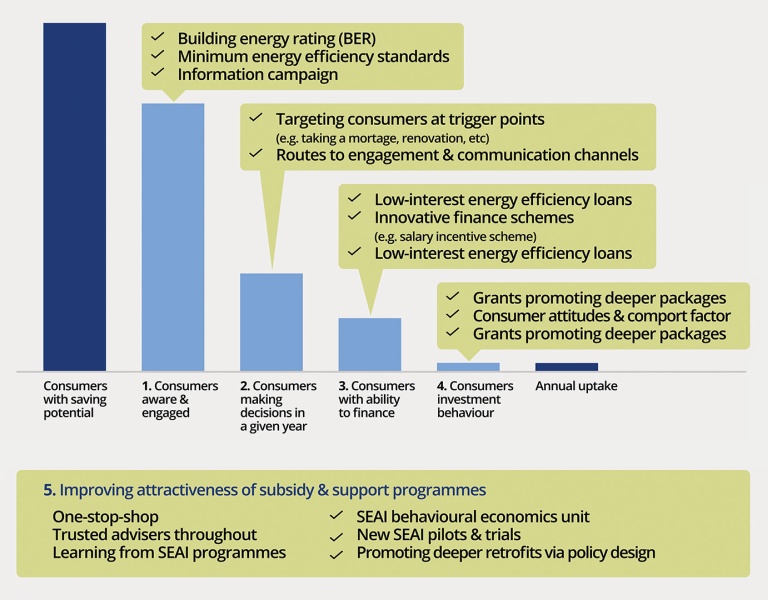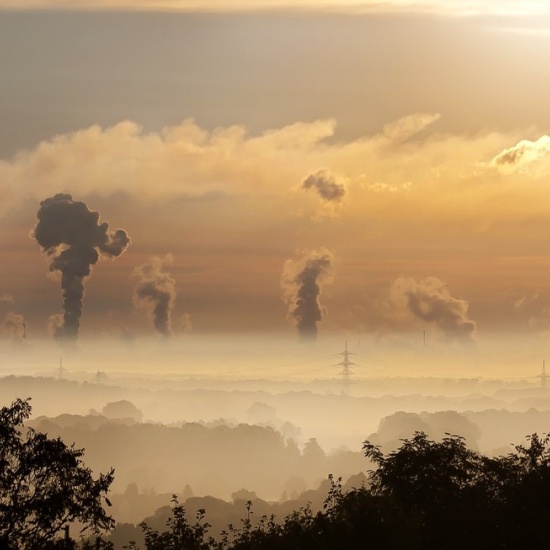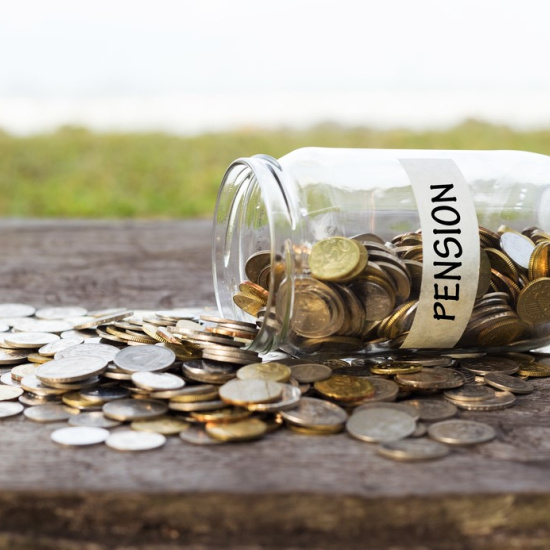Decarbonising Ireland's Home and Business Heating
As we plot our path to reduce carbon emissions from our use of heat in Ireland, policy design needs to grapple with some complex issues before broadscale change can be affected.

Impacts of heating our homes and buildings
How we live and how we build are central to our commitment to reducing carbon emissions and delivering on targets outlined in the Government's Climate Action Plan.
One significant challenge we have is Ireland's relatively cold and damp building stock. Ireland's existing housing doesn't measure up well against European norms nor our own new buildings for comfort and emissions. We rely heavily on imported oil and gas - often supplemented with coal and peat burning in fireplaces and stoves - to heat them.
In 2017, the average Irish dwelling emitted nearly twice the energy related carbon dioxide emissions than the average EU dwelling. This is due to greater use of high-carbon fuels including oil, coal and peat, and the lack of insulation in many of our homes. Eliminating energy waste and transitioning away from fossil fuels for heating poses a significant challenge for our society.
Decarbonising Home and Business #Heating; A policy perspective from Ireland via Jim Scheer @jimmerz50, Head of Data and Insights @SEAI_ie
Click to tweet (opens in a new tab)How do consumers make decisions about energy?
At SEAI, we deal with thousands of households that make energy related decisions every year. We have asked our customers about their energy upgrade journey and we also asked those that have not invested about theirs. The resulting survey information and scheme data is representative of the decision-making approach Irish households take and is a rare example of this type of information internationally.
The findings, illustrated in the figure below, provide key guides for the policy pathways ahead. The most important finding is that getting consumers to take up any option in large numbers will take time. Why? - because only a small proportion of consumers can and will (without being mandated) avail of a low-carbon option in any given year.
The relative cost of the energy upgrade options is only a consideration for consumers who are aware, motivated to act and have the budget available. And even for motivated, aware and capable consumers, the payback will only make sense for some, and they might choose to invest their money elsewhere. This means that timing of information and supports to consumers to prompt a low-carbon investments is critical.
Consumers tend to invest in a new heating source only when the existing one starts to break down. Or invest in windows or insulation when major building works are happening. This implies that even with generous supports, a significant proportion will not invest in low carbon options unless other policy levers are put in place.
How can policy help?
- Understanding consumer needs can inform policy interventions to improve the annual uptake.
- Consumer awareness and motivation can improve though policy initiatives like well times and placed information campaigns.
- Regulation may also be appropriate - something to prompt landlords to consider the options, for example
- Grants and other supports help with the upfront costs of more sustainable options.
- Other financial incentives like low interest loans will help overcome budget issues.
The chart represents a very important limit to how fast fiscal policy alone can take effect. So what are the main options available now?
SEAI has studied the sector in detail, including examinations of the transitions followed by other comparable countries. Several options are available that will need to be pursued for our future energy system.
- Before considering how we supply heat for our homes, we need to act to use less. Study after study has proven that eliminating energy waste is the cheapest way to take carbon out of the system. Technologies that are needed here are wall, roof and floor insulation, improved windows, doors, draught proofing, and heating controls.
- A heat pump system harnesses energy from free renewable sources outside the building, for heating and producing hot water. Most of Ireland's homes are heated by oil, gas and solid fuels. By improving insulation levels and air tightness these homes could be put in a state to enable a shift from direct fossil fuel use to electric heat pumps. Some homes are already ready and could switch a fossil fuel boiler out for a heat pump now.
- District heating infrastructure can have a large impact and cost effectively make use of heat that is currently wasted, particularly in areas of concentrated heat demand. Right now, power stations and data centres produce large amounts of waste heat suitable for heat networks. A key strength of heat networks is that they are not tied to any one fuel source and could use waste heat, renewable electricity or gas as energy sources in the future. Despite the strong economic case in some locations, the option is not championed in the same way as the electricity or gas heating options. Government is currently supporting district heating projects via the Climate Action Fund.
- Renewable gas injected into the gas grid can perform the same as fossil gas, so consumers can use their existing boilers and do not need to change technology to make use of it. Further analysis is required to ensure that greenhouse gas savings and supply chains for this option are sustainable for the long term.
A long-term vision
The Government has stated its intention to work towards a net-zero carbon position by 2050. The pace at which we achieve that is critically important, given the cumulative nature of emissions in the atmosphere. If we delay, we will certainly need to pursue more expensive options like carbon capture and storage and negative emissions technologies well before 2050 - options that have significant viability questions.
The Government's Climate Action Plan contains a comprehensive strategy and action list to drive decarbonisation of our heat use. Its swift delivery will be key to playing our part in addressing the climate emergency. Solving our emissions problems at home will open a world of opportunity beyond Ireland - and give us a chance to provide a safe planet for future generations.
View latest emissions report View the Government's Climate Action Plan




